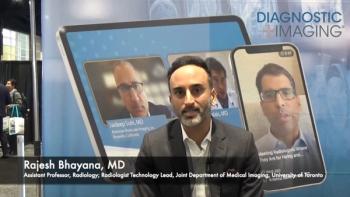
Standardized CT Procedure Names Coming Soon
The RNSA and the Regenstreif Institute are working together to unify CT procedure names, many of which differ Radlex and LOINC terminology.
A collaborative effort between the Radiological Society of North America (RNSA) and the Regenstreif Institute Inc. will result in standardized radiology procedure names aimed at improving quality, consistency, and interoperability, according to the two organizations.
The RSNA owns and maintains the RadLex medical terminology for radiology and the Regenstrief Institute owns and maintains the Logical Observational Identifiers Names and Codes (LOINC), which is the terminology standard for medical tests and measurements. Both share the National Institute of Biomedical Imaging and Bioengineering Award and are collaborating on an 18-month contract during which they will unify the names for CT procedures.
Both groups currently may have different terminology for the same procedure. For example, one may call a procedure a thorax CT angiogram, while the other may refer to it as a chest CTA scan. These discrepancies may make it difficult to record and transfer information accurately, and could affect patient care.
The unification effort will be led by Curtis Langlotz, MD, of the University of Pennsylvania and Daniel Rubin, MD, of Stanford University, who have chaired the RSNA RadLex committees; and by Daniel Vreeman, DPT, of the Regenstrief Institute and Indiana University School of Medicine, who directs the development of LOINC.
“We welcome this opportunity to develop a common terminology for radiology procedure names and a single governance structure to manage future development," Langlotz said.
The groups believe that the two systems complement each other because although LOINC is a more widely adopted and broader standard that covers tests and measurements in many domains, RadLex has a more detailed information model, tailored for radiology orders and integrates seamlessly with other terms in the RadLex, such as anatomy and visual features.
The standardized naming will facilitate the use of electronic records, national repositories, and radiology reporting applications. Within the unified model being developed under this agreement, LOINC codes will be used as the primary identifiers for radiology procedures, with all attributes of the procedure names being linked to RadLex identifiers.
Newsletter
Stay at the forefront of radiology with the Diagnostic Imaging newsletter, delivering the latest news, clinical insights, and imaging advancements for today’s radiologists.




























